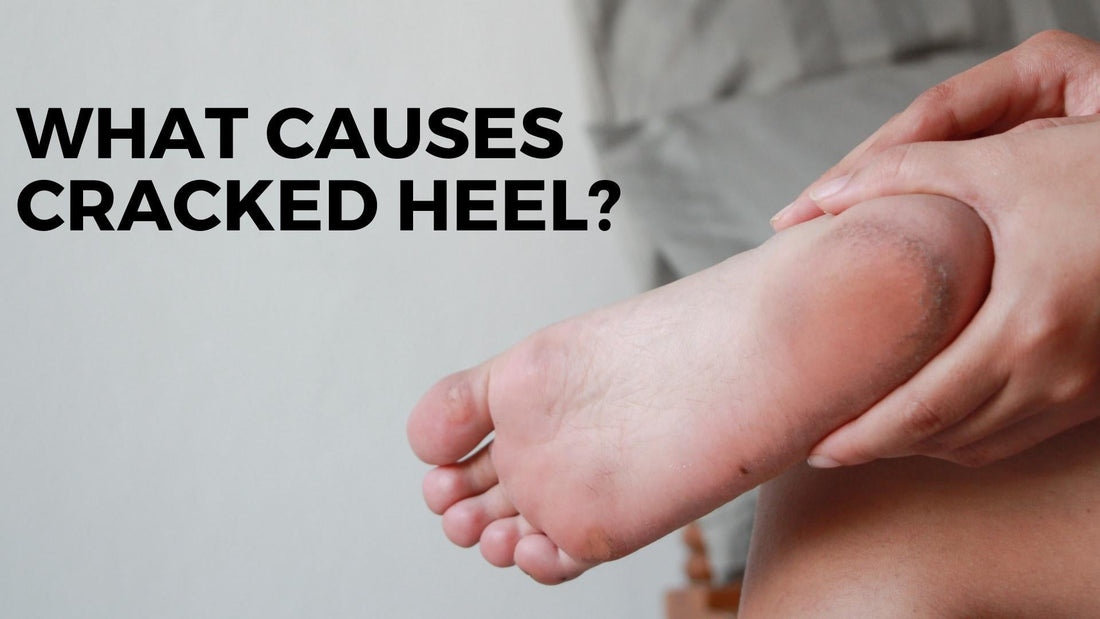
What Causes Cracked Heel?
Share
What is Cracked Heel?
Cracked heels, also known as heel fissures, are a common foot condition where the skin on the heel becomes dry, thickened, and develops deep cracks or wounds. This can cause discomfort, pain, and an unpleasant appearance. If left untreated, cracked heels may lead to more severe foot issues, including infections. Proper foot care and hydration are essential in both treating and preventing cracked heels.
What Causes Cracked Heels?
Cracked heels develop due to a variety of factors, most commonly from excessive dryness and pressure on the heel. Initially, dry, rough skin accumulates and thickens, forming calluses. Over time, pressure from standing, walking, or wearing improper footwear can cause these calluses to crack. While cracked heels can affect anyone, certain conditions increase the risk.

Common Causes of Cracked Heels
1. Dry Skin & Lack of Moisture
One of the primary causes of cracked heels is dry skin. When the skin lacks natural moisture, it becomes brittle and prone to cracking. Environmental factors like cold weather, low humidity, and hot showers can contribute to excessive dryness.
2. Skin Conditions & Medical Factors
-
Atopic Dermatitis: A chronic skin condition that causes redness, itching, and dryness, leading to cracked skin.
-
Psoriasis: An autoimmune disorder that speeds up skin cell production, leading to thickened, scaly patches on the feet.
-
Juvenile Plantar Dermatosis: Common in children and young adults, this condition results in dry, scaly, or cracked soles due to repeated friction or pressure.
-
Diabetes: High blood sugar levels can damage foot nerves, reducing natural moisture and leading to dry, cracked feet.
-
Hypothyroidism: An underactive thyroid can lead to poor circulation and reduced sweating, making the skin on the feet more prone to cracking.
3. Excess Pressure on the Heels
-
Obesity or Being Overweight: Excess body weight increases pressure on the heels, causing the skin to expand and crack.
-
Prolonged Standing: Standing for long periods, especially on hard surfaces, places constant pressure on the feet, making them more susceptible to dryness and fissures.
4. Improper Footwear
-
Open-Back Shoes or Sandals: Wearing open-back footwear frequently exposes the heels to the elements, leading to moisture loss and increased sensitivity.
-
Walking Barefoot: Frequent barefoot walking can cause excessive friction and dryness, increasing the risk of heel cracks.
How to Treat and Prevent Cracked Heels Naturally
Taking care of your feet with a proper skincare routine can prevent and heal cracked heels. Here are some essential tips:
-
Exfoliate Regularly: Use a gentle foot scrub or pumice stone to remove dead skin and prevent callus buildup.
-
Moisturize Daily: Applying a deeply hydrating foot cream or oil helps retain moisture and repair damaged skin.
-
Wear Supportive Footwear: Choose closed shoes with cushioned insoles to reduce pressure on your heels.
-
Stay Hydrated: Drinking plenty of water keeps your skin hydrated from the inside out.
-
Use Natural Oils: Essential oils like coconut oil, shea butter, and tea tree oil can nourish the skin and promote healing.
Heal Cracked Heels Naturally with Nevilife Cracked Heel Oil
One of the best natural remedies for dry, cracked heels is Nevilife Cracked Heel Oil. This deeply moisturizing and therapeutic oil is formulated with a blend of natural ingredients to: ✅ Soften rough, dry skin on the heels
✅ Repair deep cracks and fissures
✅ Hydrate and nourish for long-lasting moisture
✅ Reduce inflammation and discomfort
By using Nevilife Cracked Heel Oil daily, you can restore your feet’s natural softness and prevent further cracking.
Final Thoughts
Cracked heels may seem like a minor issue, but if left untreated, they can lead to pain and complications. By identifying the root causes and using effective natural remedies like Nevilife Cracked Heel Oil, you can enjoy soft, healthy feet year-round. Take the first step toward smoother heels today!
